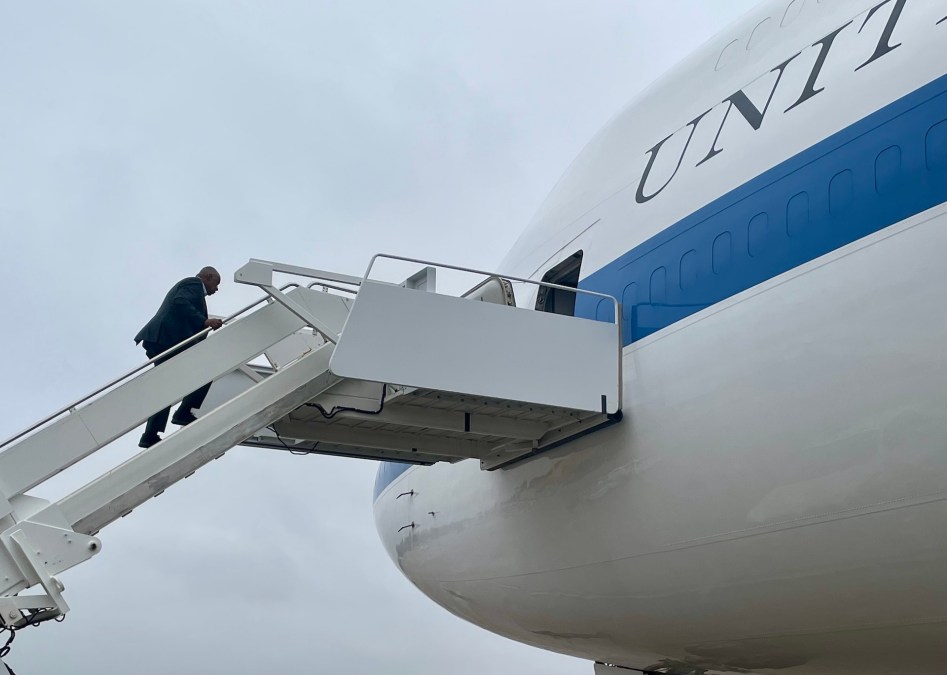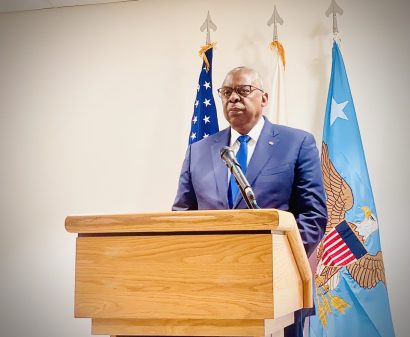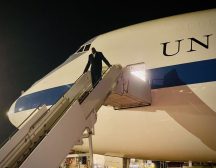Sec. Austin heads to the Pacific with a focus on accelerating emerging tech

Defense Secretary Lloyd Austin departed early Friday morning on his twelfth and final trip to the Indo-Pacific region, where he will engage in a series of bilateral and multilateral meetings with some of his closest colleagues across Australia, the Philippines, Laos and Fiji.
“During this trip, we will deliver results to advance cooperation, strengthen our relationships, and build an enduring network of allies and partners. I am proud of the historic progress we’ve made over the last four years and the depth of continuing U.S. commitment to the region,” Austin said in a statement ahead of takeoff.
Earlier this week, senior defense officials previewed plans for the trip on the condition of anonymity during a briefing at the Pentagon with a small group of reporters invited to accompany Austin on his journey. They spotlighted aims to promote deeper research and technology-driving partnerships and further the U.S. military’s interoperability with partners in the region.
First, the secretary and his entourage will land in Darwin, Australia. There, he’ll participate in a trilateral defense ministerial meeting with his Australian and Japanese counterparts.
Senior U.S. defense officials said those involved plan to make “significant strides” to evolve their joint air and missile defense and information-sharing capabilities.
“On the interoperability front, you will see the three ministers … announcing that Japan is committing to integrate its forces into Marine Rotational Force Darwin rotations to train alongside the United States and Australia in Darwin starting next year in 2025. So that’s going to be a very critical … deliverable rounding out those trilateral discussions,” one of the background briefers said.
After that first stop, Austin and his crew will continue on to the Philippines, where they’ll spend a full first day in Manila and then a half day on the island of Palawan.
He’ll visit Camp Aguinaldo, the Philippines’ military base where their Department of National Defense is housed, to participate in a groundbreaking ceremony for a new bilateral Combined Coordination Center, or CCC, where forces from both nations’ militaries will sit side-by-side to conduct operational planning.
Next up, in Palawan, Austin will visit Philippines Western Command headquarters, which is a key node for ongoing naval operations in the South China Sea.
“Then Secretary Austin will head to the C2 fusion center, a site built by [U.S. Indo-Pacific Command] for military information sharing — for a Philippine Navy tech demonstration of a T-12 unmanned surface vessel,” a senior defense official told reporters in the briefing.
In response to questions from DefenseScoop, the official said there will not be any announcements associated with the U.S. pre-positioning uncrewed assets in these Pacific nations to deter China, but the demo will involve military personnel from the Philippines operating some of the drone systems that the Pentagon has provided to them.
“Those types of systems will be a strong theme throughout the effort, for sure,” they told DefenseScoop.
From there, Austin and the team will go to Laos for the ASEAN defense ministers meeting.
On the sidelines, the Pentagon leader is expected to unveil multiple new partnership initiatives and announce what officials called the “first-ever U.S. DOD vision statement for a prosperous and secure Southeast Asia.”
Austin’s last stop on this journey will be in Fiji — notably marking the first time an American leader serving in that capacity visits the nation.
“Significantly, this is the big announcement. He will announce that our countries will begin negotiations on a U.S.-Fiji SOFA, the Status of Forces Agreement … You know this is important, because it really spells out how the United States, our forces, can operate in the country, and it will empower us to do more together with them,” a senior defense official told reporters.
Austin is also set to sign a new “acquisition and cross-servicing agreement,” which the official said will enable America to send logistical support to the island nation “very quickly in any kind of emergency.”
“I am proud of the historic progress we’ve made over the last four years and the depth of continuing U.S. commitment to the region,” Austin said in the statement.






